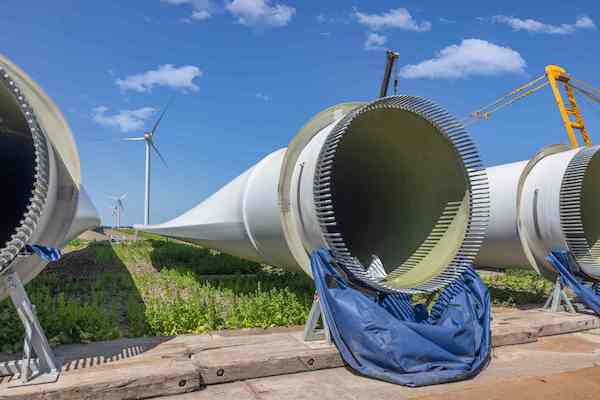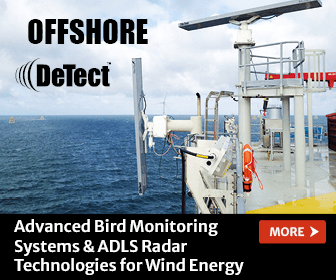Whole Turbine Predictive Maintenance
The Biden administration’s Inflation Reduction Act (IRA) 2022 marked the most significant action the United States has taken on clean energy to help galvanize the country’s green energy projects.
The progress is already evident: The US Department of Energy's 2023 Land-Based Wind Market Report noted that the average wind deployment forecast for 2026 is 18GW, a significant increase from the 11GW forecast the year before the IRA was introduced.
For the wind sector, it presented a long-term roadmap. While new farms were incentivized, it also offered repowering tax credits, enabling operators to reset the life of their fleets. However, permitting for new developments, especially offshore, remains a significant bottleneck, and inflated costs to build and operate have made previously agreed power prices unattractive. While delays in new farms continue, operators are increasingly concentrated on efforts to maximize existing fleet financial performance.

Digitalization is playing a key role in extending and optimizing the life of existing farms. The US is not immune to the new turbine reliability issues which have plagued the industry for the last 2 years; there is growing need for technologies which actively address these issues.
As demand for wind energy ramps up, digital solutions such as advanced sensing, IOT, and predictive analytics, are critical to ensure assets continue to operate at the highest level possible. With the industry driving efforts to lower the Levelized Cost of Energy (LCOE), digital solutions are also crucial to the long-term sustainability of the sector by optimizing efficiency, improving maintenance strategies, and enhancing overall asset performance.
A new report surveyed senior leaders across the wind industry, highlighting the clear focus of asset owners to accelerate the application of digital technology to actively address current sector challenges.
On the global stage, US fleet owners are leaders in digitalization investment — 62 percent of those surveyed in the report stating they have good progress in digitization, a remarkable increase when compared to only 12 percent suggesting this in 2020.
But with more than a third of US operators recognizing they have more to do in adopting advanced digital technology to safeguard their fleets, its value should not be understated. Senior leaders highlighted digitalization’s major benefit as the ability to apply intelligent planning and decision-making support, and many identified turbine sensors and predictive analytics as the greatest advantage in making fleets run more efficiently.

With turbines increasing in size and complexity, there is growing demand for additional sensors to cover more turbine components such as blades, towers, and electrical components.
Digitalization opens the door for comprehensive predictive maintenance (PdM) which can revolutionize an operator’s outputs, reduce costly maintenance expenditure and crucially, deliver improved reliability across existing assets.
Providing a holistic overview of a turbine’s health can empower asset managers to develop strong operation and maintenance strategies which reduce downtime and keep the running of fleets seamless. A 100MW wind farm can produce 200 false alerts per year, resulting in approximately $200,000 in technician labor costs, transport to turbines, and lost revenue during downtime. High-quality predictive maintenance using advanced analytics can significantly reduce those false alerts.
Available tools, including AI, can be integrated with various CMS systems to deliver an end-to-end solution from detection to repair for major components. This minimizes routine in-person inspections, reduces repair costs, and allows operators to forecast and accurately budget unplanned repairs 6 to 18 months ahead. Improved operational efficiency, reduced maintenance expenses, and increased energy production means a quicker return on investment.
With the IRA spurring greater investment to accelerate the US clean energy future, it brings with it a roadmap for the wind industry to follow. Integrating digital solutions to deliver a full PdM overview of turbines is what will truly see it fulfill its promise. While the IRA incentives present an opportunity, maximizing the potential of existing wind farms through advanced technologies to bolster the sector’s productivity and efficiency should be a matter of course for the industry’s leaders.
In doing so, the US wind energy market will take huge steps forward in combining legislative support with technological innovation to deliver streamlined processes which will propel it towards a more productive future that meets demand for renewable energy.
 Ashley Crowther is Chief Commercial Officer at ONYX Insight - a global predictive analytics solution provider. ONYX’s combination of software, hardware, consultancy and engineering services has delivered solutions across 16,000 wind turbines in 30 countries around the world.
Ashley Crowther is Chief Commercial Officer at ONYX Insight - a global predictive analytics solution provider. ONYX’s combination of software, hardware, consultancy and engineering services has delivered solutions across 16,000 wind turbines in 30 countries around the world.
ONYX Insight brings unbiased predictive analytics to owners and operators of renewable energy assets via seven global offices and 10 patents.
ONYX Insight | onyxinsight.com
Author: Ashley Crowther
Volume: 2024 January/February




.jpg?r=1100)





.jpg?r=8921)

